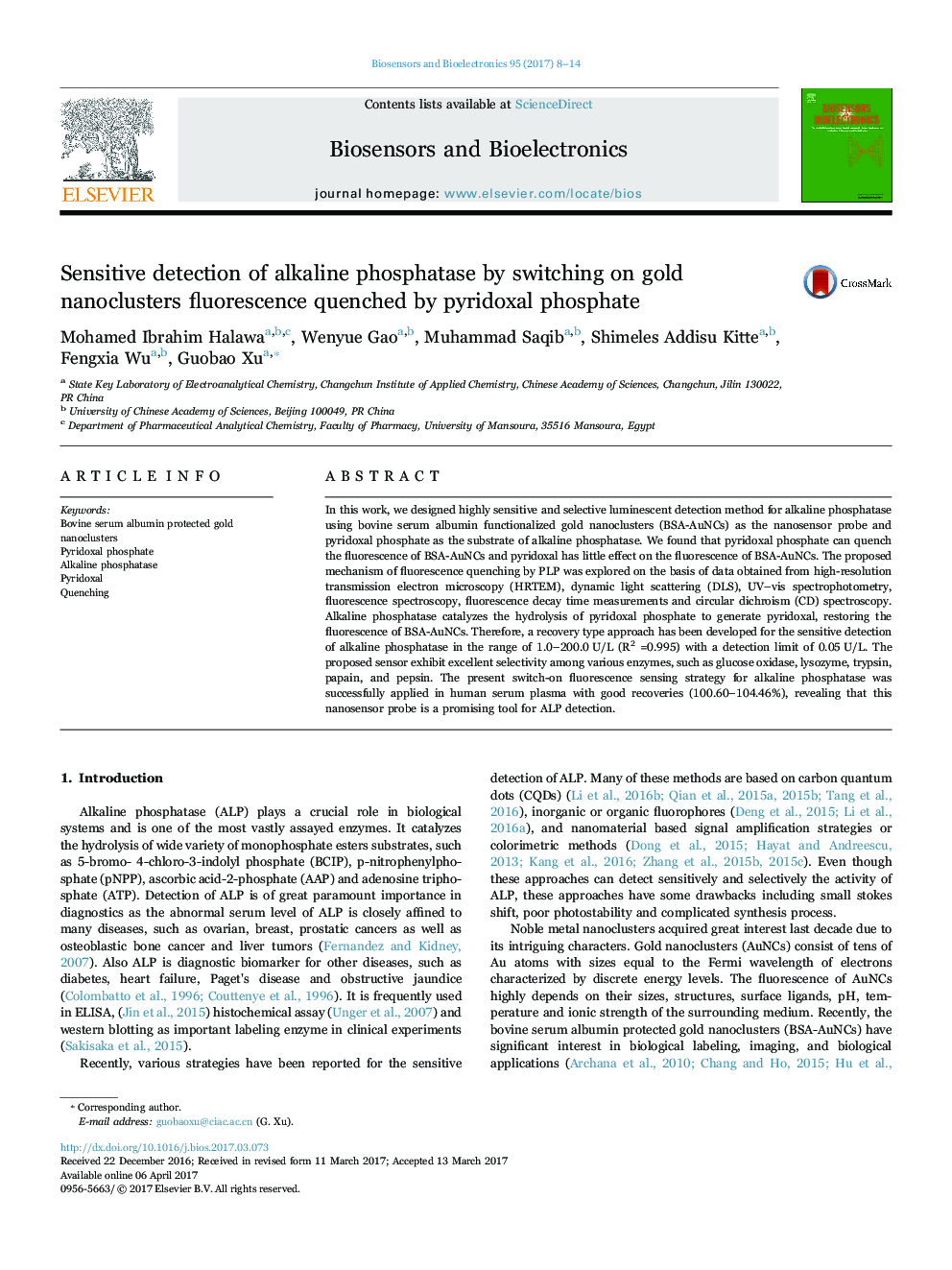| Article ID | Journal | Published Year | Pages | File Type |
|---|---|---|---|---|
| 5031486 | Biosensors and Bioelectronics | 2017 | 7 Pages |
Abstract
In this work, we designed highly sensitive and selective luminescent detection method for alkaline phosphatase using bovine serum albumin functionalized gold nanoclusters (BSA-AuNCs) as the nanosensor probe and pyridoxal phosphate as the substrate of alkaline phosphatase. We found that pyridoxal phosphate can quench the fluorescence of BSA-AuNCs and pyridoxal has little effect on the fluorescence of BSA-AuNCs. The proposed mechanism of fluorescence quenching by PLP was explored on the basis of data obtained from high-resolution transmission electron microscopy (HRTEM), dynamic light scattering (DLS), UV-vis spectrophotometry, fluorescence spectroscopy, fluorescence decay time measurements and circular dichroism (CD) spectroscopy. Alkaline phosphatase catalyzes the hydrolysis of pyridoxal phosphate to generate pyridoxal, restoring the fluorescence of BSA-AuNCs. Therefore, a recovery type approach has been developed for the sensitive detection of alkaline phosphatase in the range of 1.0-200.0Â U/L (R2 =0.995) with a detection limit of 0.05Â U/L. The proposed sensor exhibit excellent selectivity among various enzymes, such as glucose oxidase, lysozyme, trypsin, papain, and pepsin. The present switch-on fluorescence sensing strategy for alkaline phosphatase was successfully applied in human serum plasma with good recoveries (100.60-104.46%), revealing that this nanosensor probe is a promising tool for ALP detection.
Related Topics
Physical Sciences and Engineering
Chemistry
Analytical Chemistry
Authors
Mohamed Ibrahim Halawa, Wenyue Gao, Muhammad Saqib, Shimeles Addisu Kitte, Fengxia Wu, Guobao Xu,
